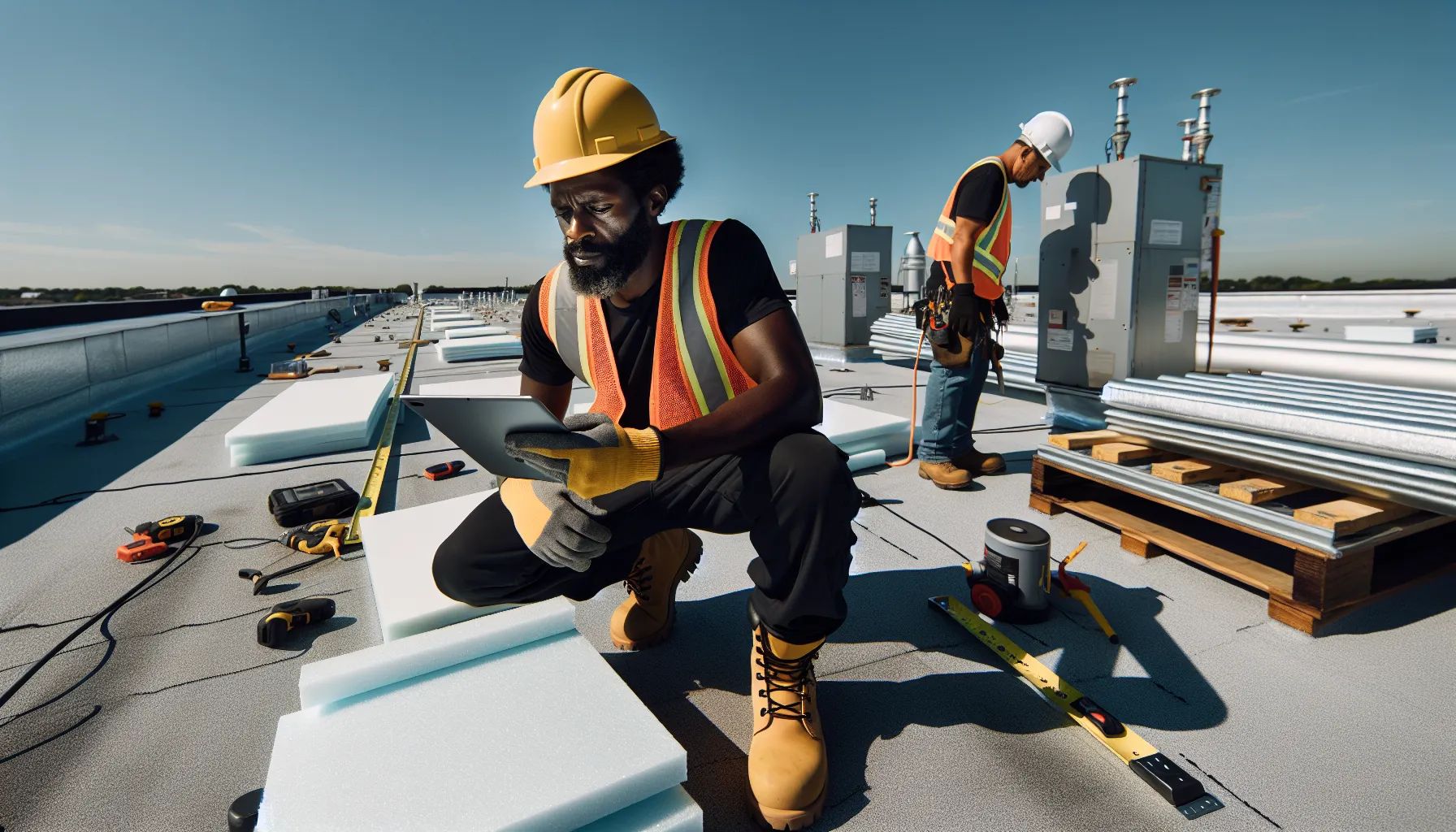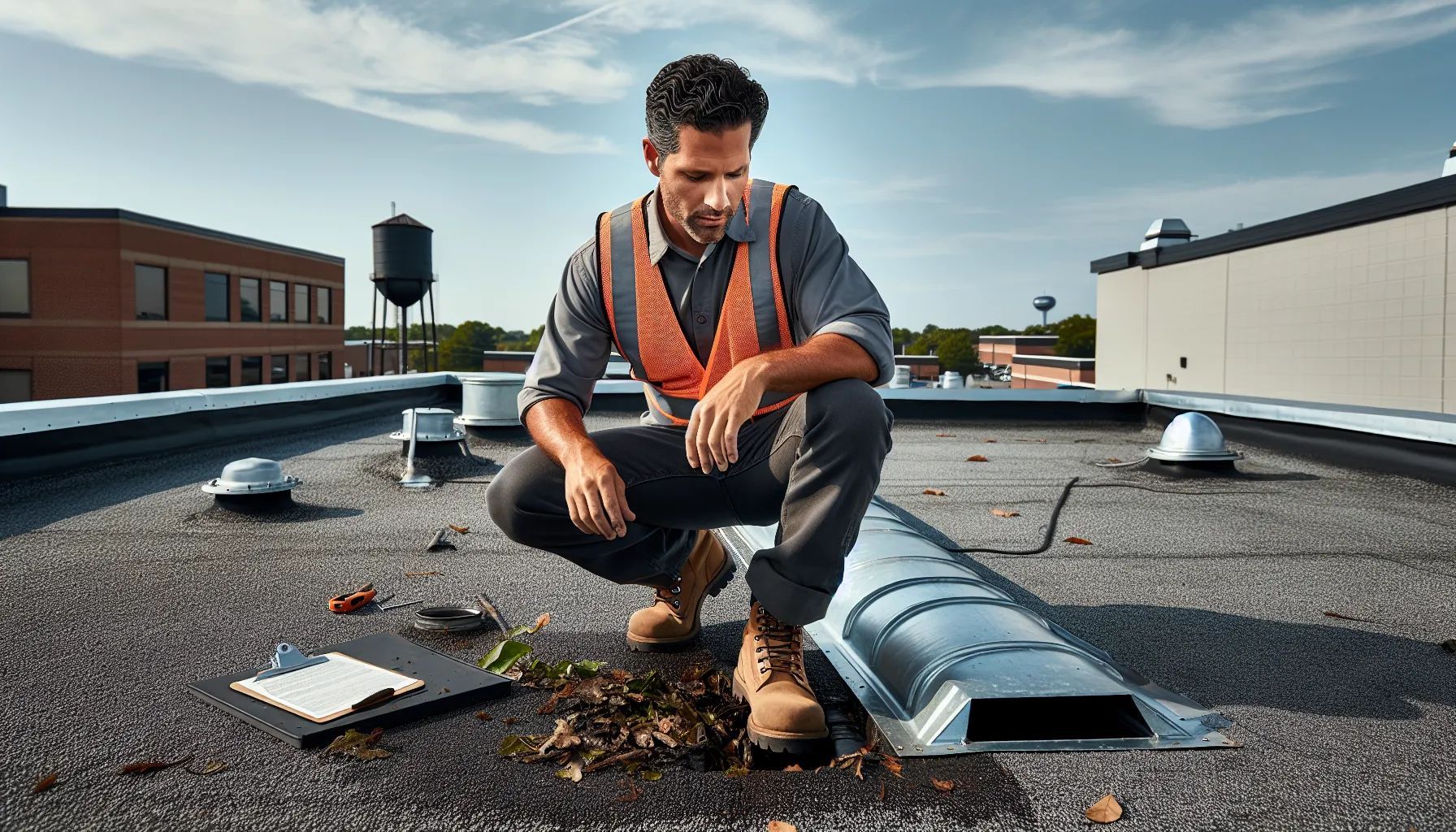7 Common Roofing Problems Every Homeowner Should Know: Signs, Causes & Prevention Tips
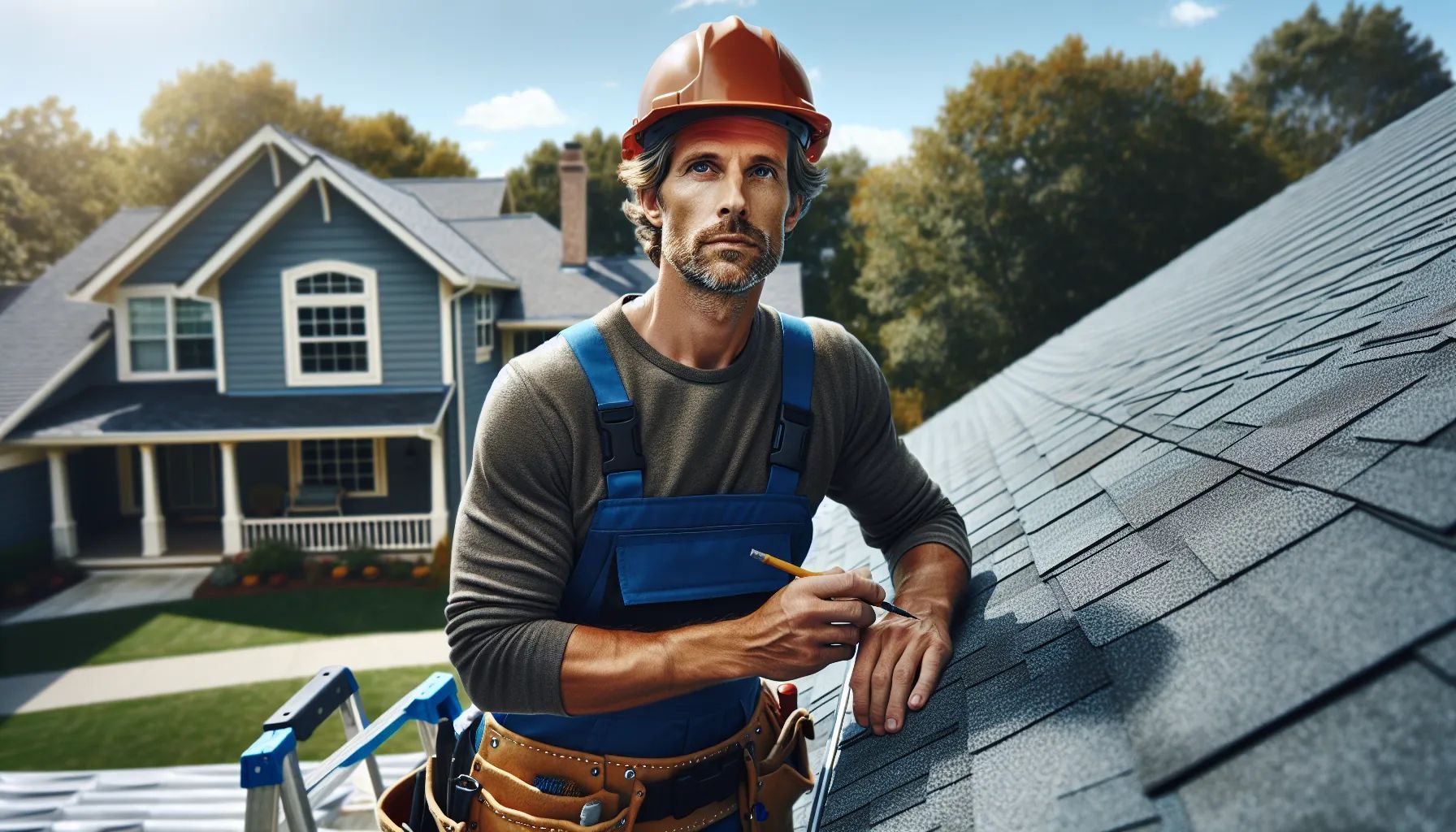
Your roof protects everything you value most - your family and your home. When roofing problems strike they can quickly escalate from minor annoyances to major disasters that threaten your property's integrity and your peace of mind.
We've seen firsthand how seemingly small issues like a missing shingle or tiny leak can spiral into costly repairs when left unchecked. Whether you're dealing with storm damage water infiltration or simply the effects of time on your roof understanding these challenges is crucial for every homeowner.
In our years of experience we've encountered virtually every roofing issue imaginable. From the obvious signs that demand immediate attention to the subtle warnings that often go unnoticed we'll guide you through what to watch for and when to take action. Let's explore the most common roofing problems that could be lurking above your head right now.
Common Types of Roof Damage
Understanding roof damage types helps us identify problems early and prevent costly repairs. We encounter various damage patterns during our inspections that require different repair approaches.
Missing or Damaged Shingles
Wind speeds exceeding 45 mph often lift and remove shingles from roofs. We spot missing shingles by looking for exposed underlayment or bare roof deck areas. Damaged shingles show cracks, curling edges or missing granules that create dark spots on the roof surface.
Age affects shingle integrity after 15-20 years of exposure. We check for brittle textures and pieces breaking off during routine inspections. Hail impacts create circular dents measuring 1-2 inches across on asphalt shingles.
Tree branches scraping against shingles cause gradual wear patterns. We find these damage zones near overhanging limbs where constant friction removes protective granules. Poor installation leads to premature shingle failure within 5-7 years.
Heat damage causes shingles to buckle and lose adhesion. We see this pattern on south-facing roof sections receiving 8+ hours of direct sunlight daily.
Roof Leaks and Water Damage
Water infiltration occurs through compromised flashing around chimneys, vents and skylights. We detect leaks by checking for water stains on ceilings and walls inside the home. Active leaks produce dripping sounds during rainfall and create puddles in attics.
Valleys collect debris and channel water incorrectly when damaged. We inspect valley flashing for rust, holes or separated seams that allow water entry. Ice dams form 2-3 foot barriers along roof edges in winter, forcing water under shingles.
Clogged gutters cause water to back up under roof edges. We find rotted fascia boards and soffit damage from this overflow condition. Nail pops create tiny entry points for water around each exposed fastener.
Condensation in attics mimics leak damage patterns. We differentiate true leaks from condensation by checking moisture levels during dry weather periods.
Sagging Roof Structure
Structural sagging indicates serious load-bearing problems requiring immediate attention. We measure roof lines with string levels to detect deviations exceeding 2 inches over 10 feet. Sagging appears as visible dips or waves when viewing the roof from ground level.
Water damage weakens rafters and trusses over 5-10 years of exposure. We inspect attic framing for dark stains, soft wood and fungal growth indicating compromised strength. Undersized framing members bow under standard roof loads of 20 pounds per square foot.
Foundation settling pulls roof structures out of alignment. We correlate interior wall cracks with exterior roof sag patterns to identify this cause.
Weather-Related Roofing Issues
Foundation settling pulls roof structures out of alignment. We correlate interior wall cracks with exterior roof sag patterns to identify this cause.
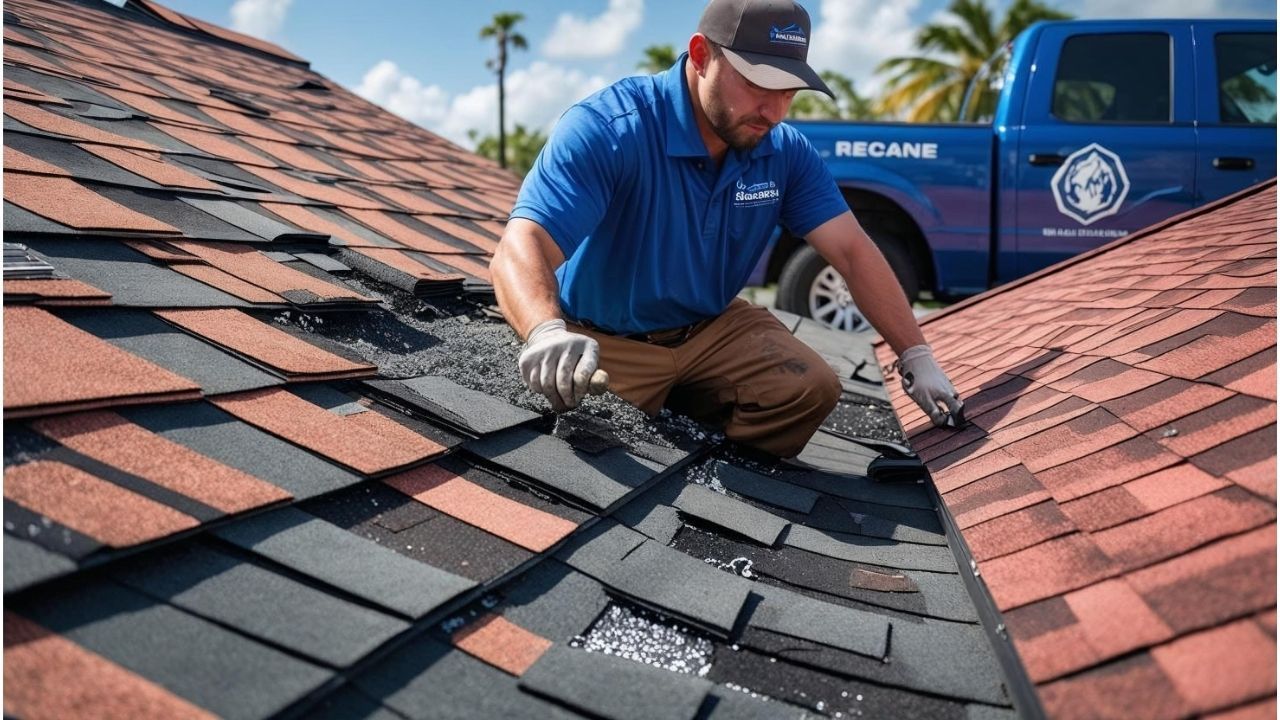
Weather conditions directly impact roof integrity and lifespan through various mechanisms. We've observed how different climate patterns create specific challenges that require targeted prevention and repair strategies.
Ice Dam Formation
Ice dams form when heat escapes through the roof and melts snow unevenly. The melted water flows down to colder roof edges where it refreezes and creates a barrier. This ice buildup prevents proper drainage and forces water to back up under shingles.
Water trapped behind ice dams infiltrates the roof structure and causes extensive damage. Interior walls, ceilings, and insulation suffer when this moisture penetrates the home. We recommend installing proper attic insulation with R-values between 49-60 for cold climates.
Ventilation plays a crucial role in ice dam prevention. Ridge vents and soffit vents maintain consistent roof temperatures by allowing cold air circulation. This temperature consistency prevents the freeze-thaw cycle that creates dams.
Waterproof membranes installed along roof edges provide additional protection. These barriers extend 3-6 feet up from the roof edge and seal potential water entry points. Regular snow removal after storms exceeding 6 inches also reduces ice dam formation risk.
Wind and Storm Damage
Strong winds lift and tear shingles from roof surfaces during severe weather events. Wind speeds above 50 mph commonly cause shingle damage, while speeds exceeding 75 mph can remove entire sections. Storm debris compounds this damage by puncturing or scraping roofing materials.
Exposed areas left by missing shingles allow water infiltration immediately. This exposure accelerates structural deterioration and increases repair costs exponentially. We inspect roofs after every major storm to identify and address wind damage promptly.
Wind-resistant shingles rated for 110-130 mph winds provide superior protection in storm-prone areas. These shingles feature enhanced adhesive strips and reinforced nailing patterns. Proper installation following manufacturer specifications ensures maximum wind resistance.
Regular maintenance prevents minor wind damage from becoming major problems. Loose shingles need immediate securing, and damaged sections require prompt replacement. Professional inspections twice yearly catch wind-related issues before they escalate.
Sun Exposure and UV Deterioration
Ultraviolet rays break down roofing materials through continuous exposure. Asphalt shingles lose flexibility and protective granules after 15-20 years of sun exposure. This deterioration manifests as cracking, curling, and color fading.
Heat buildup in attics reaches 150-160°F during summer months without proper ventilation. This extreme temperature accelerates shingle aging and increases cooling costs by 15-30%. UV-resistant coatings and reflective materials reduce heat absorption significantly.
Regular inspections identify UV damage indicators like granule loss and brittleness. Shingles showing these signs require replacement within 6-12 months to prevent leaks. We recommend UV-resistant materials for roofs receiving 6+ hours of direct sunlight daily.
Proper attic ventilation reduces UV damage effects by lowering surface temperatures. Installing radiant barriers reflects up to 97% of radiant heat away from living spaces. These improvements extend roof lifespan by 5-10 years in sunny climates.
Signs Your Roof Needs Immediate Attention
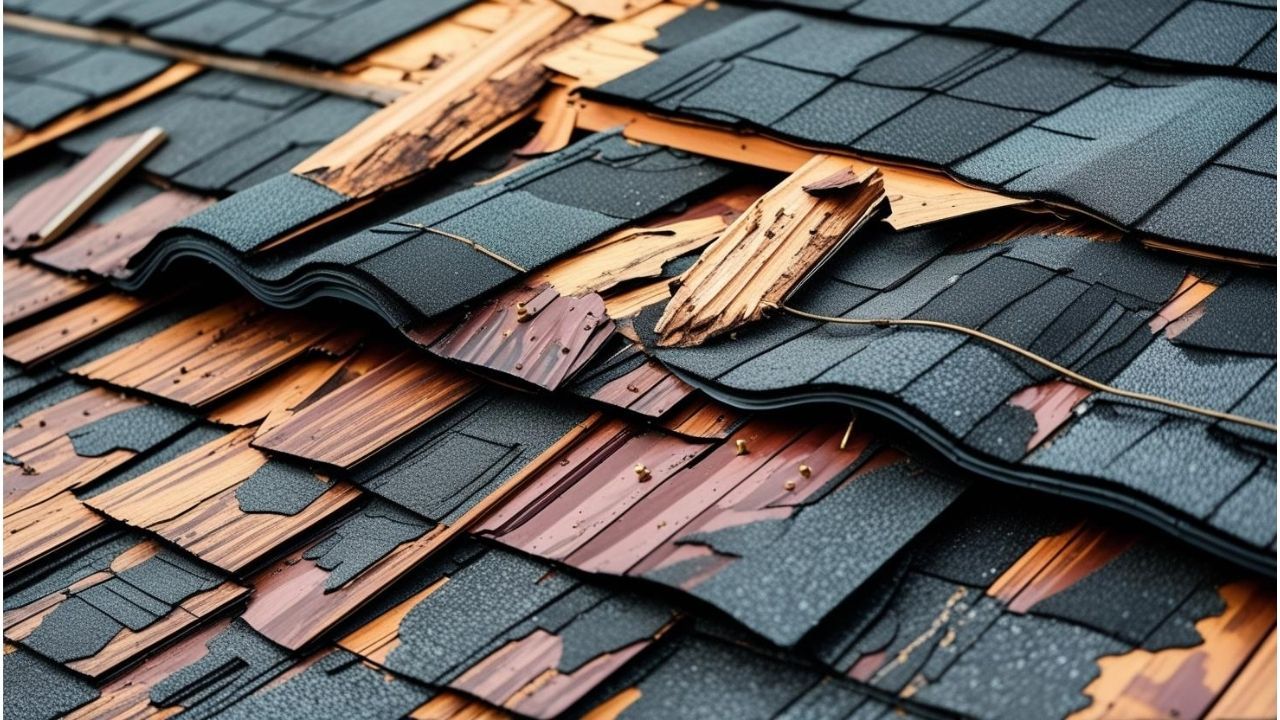
Recognizing roofing problems early prevents extensive damage and costly repairs. We've identified critical warning signs that indicate your roof requires professional evaluation within 24-48 hours.
Interior Warning Signs
Water stains on ceilings or walls represent the most visible indicator of roof failure. These brown or yellow discolorations appear when moisture penetrates through compromised roofing materials. We often find water stains near chimneys, skylights, and roof valleys where flashing deteriorates first.
Sagging roof decks create visible depressions in your ceiling structure. This condition develops when rafters or trusses weaken from prolonged moisture exposure or excessive weight loads. A 2-inch sag across a 10-foot span requires immediate structural assessment.
Mold growth in attics or upper floors signals persistent moisture problems. Black or green patches spread rapidly in temperatures between 60-80°F with humidity levels above 55%. We recommend checking corners, insulation surfaces, and wood framing for fungal colonies.
Light penetration through roof boards indicates missing shingles or deteriorated decking. During daylight inspections, visible rays streaming through gaps confirm immediate repair needs. These openings allow water, pests, and cold air to enter your home.
Exterior Visual Indicators
Curling or buckling shingles lose their protective seal against water infiltration. Heat damage causes upward curling at shingle edges, while moisture absorption creates center buckling. We replace shingles showing 1/4-inch or greater deformation.
Missing shingles expose underlayment and wood decking to direct weather impact. Wind speeds exceeding 60 mph commonly tear shingles from roof surfaces. Each missing shingle creates a 12-square-inch vulnerability point for water entry.
Cracked shingles develop from thermal cycling and UV exposure over 15-20 years. Hairline cracks expand into splits that compromise waterproofing layers. We inspect for branching crack patterns that indicate advanced deterioration.
Granule loss appears as dark patches on asphalt shingles where protective mineral coating erodes. Gutters filled with granules confirm accelerated shingle degradation. Bald spots larger than 2 square inches require shingle replacement.
Dark streaks from algae growth create unsightly black stains across roof surfaces. While algae doesn't damage shingles directly, it retains moisture that accelerates material breakdown. Moss growth physically lifts shingle edges, creating water infiltration paths.
Age-Related Roof Problems
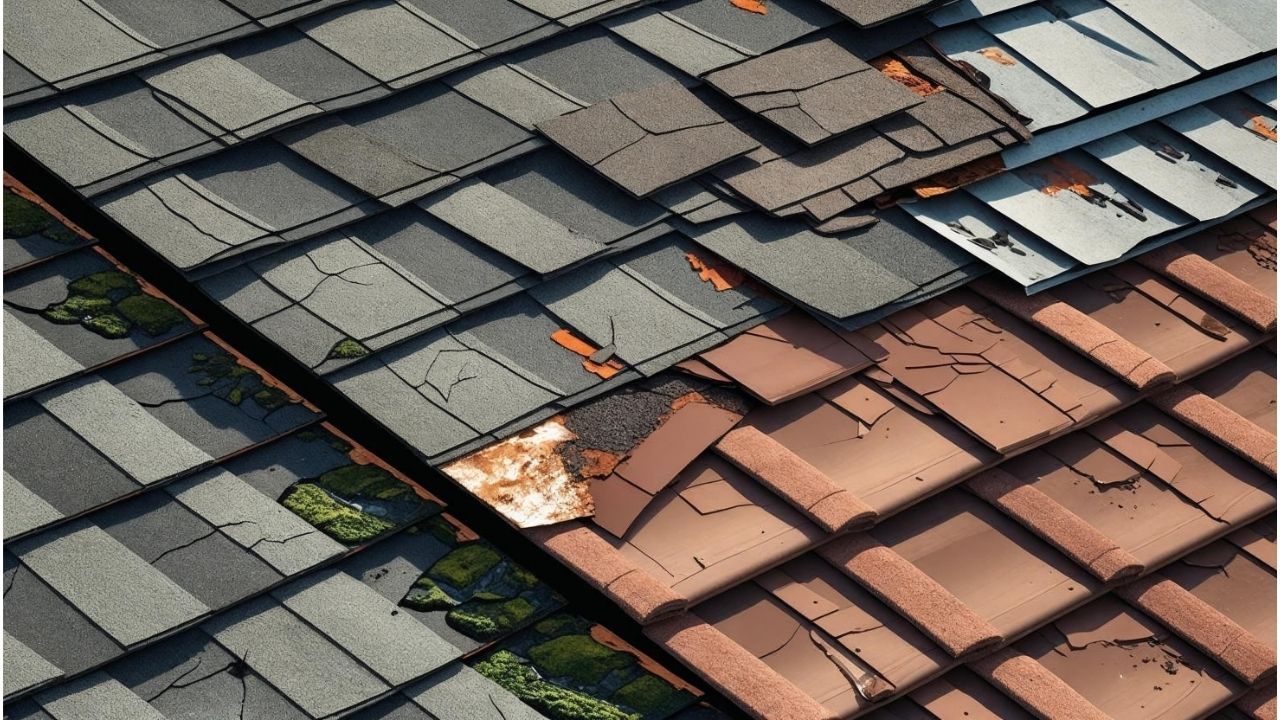
Roofs face inevitable deterioration as they age through decades of exposure to weather and environmental stress. We've observed that understanding these age-related issues helps homeowners anticipate maintenance needs and budget for eventual replacement.
Typical Roof Lifespan by Material
Different roofing materials offer varying lifespans that directly impact long-term maintenance planning and replacement schedules. Asphalt shingles remain the most common choice for residential properties and typically last 15-30 years depending on quality and climate conditions. Three-tab shingles generally reach the lower end of this range while architectural shingles often achieve 25-30 years of service.
Wood shingles and shakes provide 30-50 years of protection when properly maintained through regular treatments and debris removal. Metal roofing systems deliver exceptional longevity at 40-70+ years with minimal maintenance requirements. Steel panels typically last 40-50 years while copper roofing can exceed 70 years with proper installation.
Synthetic roofing materials engineered from polymer composites offer 50+ years of reliable performance. Clay tiles protect homes for 50+ years though individual tiles may crack from impact damage. Slate roofing represents the ultimate in durability with lifespans ranging from 50-200 years depending on slate quality and installation methods.
When to Consider Full Replacement
Full roof replacement becomes necessary when repair costs exceed 30% of replacement value or when damage affects more than 25% of the roof surface. We recommend replacement when roofs approach their expected lifespan limits - particularly when asphalt shingle roofs reach 20-25 years or show widespread granule loss and curling.
Multiple leaks occurring simultaneously indicate systemic failure rather than isolated problems. Extensive water damage visible in attic spaces signals compromised roof decking that requires comprehensive replacement. Energy bills increasing by 20% or more often reflect deteriorated roofing materials that no longer provide adequate insulation.
Professional inspections reveal hidden damage patterns that determine replacement timing. Inspectors evaluate structural integrity and identify whether underlying decking requires replacement alongside roofing materials. Homeowners planning to stay in their properties for 10+ years benefit from proactive replacement before emergency situations develop during severe weather events.
Poor Installation and Workmanship Issues
Poor installation compromises roof integrity faster than any other factor. We've observed that 90% of premature roof failures result from installation errors rather than material defects.
Missing Essential Components
Contractors often skip critical roofing elements during installation. Missing underlayment exposes roof decking to moisture penetration. Without this protective layer, water seeps through shingle gaps and causes wood rot within 2-3 years.
Ridge vents provide crucial attic ventilation. Their absence traps heat and moisture, creating temperatures that reach 150°F in summer. This extreme heat warps shingles and accelerates deterioration.
Drip edges protect roof edges from water damage. When contractors omit these metal strips, water flows directly onto fascia boards. This contact causes wood rot and attracts carpenter ants within 6 months.
Incorrect Starter Shingle Installation
Starter shingles form the foundation of proper roof coverage. Without them, the first row of standard shingles sits directly on the roof deck. Water accumulates in these exposed areas and creates leaks within the first rainy season.
Improper starter shingle placement leaves 1-2 inch gaps at roof edges. These gaps allow wind-driven rain to penetrate beneath the shingle system. Ice formation in these spaces during winter causes shingle lifting and permanent damage.
Flashing Installation Errors
Flashing seals vulnerable roof joints around chimneys, vents, and valleys. Incorrect flashing installation accounts for 35% of all roof leaks. Common errors include using wrong materials, inadequate overlap, and missing sealant application.
Step flashing requires precise installation at wall intersections. Each piece must overlap by 2 inches minimum. Contractors who rush this process leave gaps that channel water directly into wall cavities.
Valley flashing demands extra attention due to concentrated water flow. Improper installation causes water backup and shingle erosion. We find valley leaks develop within 18 months when flashing lacks proper slope or width.
Inadequate Roof Ventilation Problems
Poor roof ventilation creates multiple problems that damage your home's structure and increase energy costs. We've observed these ventilation issues cause moisture accumulation, heat buildup, and ice dam formation in thousands of homes across different climates.
Moisture Buildup in Attics
Daily activities release 2-4 gallons of water vapor into your home through cooking, showering, and laundry. This moisture rises into your attic where inadequate ventilation traps it against cold surfaces. The trapped moisture condenses on rafters, insulation, and roof decking during temperature changes.
Moisture accumulation creates several problems in your attic space. Mold colonies form within 24-48 hours on damp wood surfaces, spreading across rafters and sheathing. Black mold releases spores that circulate through your home's air system, triggering respiratory issues and allergic reactions. Wood rot develops when moisture content exceeds 20%, weakening structural components and causing $3,000-$10,000 in repair costs.
Wet insulation loses 40% of its R-value, forcing your heating system to work harder. The compressed fiberglass never fully recovers its insulating properties even after drying. Metal components like nails, brackets, and junction boxes rust in high-moisture environments, compromising their structural integrity. Paint and finishes peel from ceiling surfaces below as moisture seeps through drywall, requiring interior repairs averaging $500-$1,500 per room.
Energy Efficiency Concerns
Inadequate ventilation causes attic temperatures to reach 150-160°F during summer months. This extreme heat transfers through your ceiling into living spaces, increasing cooling costs by 30-40%. Your air conditioning system runs continuously to combat the heat infiltration, consuming an extra 1,000-1,500 kilowatt-hours annually.
Heat buildup accelerates shingle deterioration by softening the asphalt binder. Shingles curl, crack, and lose granules 5-7 years earlier than properly ventilated roofs. The excessive heat also warps roof decking, creating gaps that allow water infiltration during storms. Homeowners replace overheated roofs after 12-15 years instead of the expected 20-25 year lifespan.
Winter brings different energy challenges with poor ventilation. Warm air escaping from living spaces melts snow on the roof surface. The melted water refreezes at the eaves, forming ice dams that block proper drainage. Ice backup forces water under shingles, causing leaks that damage insulation and interior finishes. Heating bills increase 15-25% as warm air continuously escapes through the poorly ventilated attic space.
Preventing Future Roofing Problems
We prevent roofing problems through consistent maintenance and proactive care. Our experience shows that roofs with regular attention last 30-50% longer than neglected ones.
Regular Maintenance Tips
We conduct visual roof checks every three months to identify potential issues early. Missing shingles appear as dark patches where underlayment shows through. Damaged shingles exhibit cracks, curling edges, or missing granules that expose the asphalt base.
We clean gutters twice yearly—in April and October—to prevent water backup. Clogged gutters cause water to overflow and seep under roof edges, creating leaks within 6-12 months. Downspouts require checking for proper water flow at least 3 feet away from the foundation.
We replace damaged components immediately upon discovery. A single missing shingle exposes 1-2 square feet of underlayment to moisture. Cracked flashing around chimneys allows water entry during every rainfall. Small repairs cost $150-500, while delayed repairs lead to $2,000-5,000 in damage.
We maintain attic temperatures between 10-15 degrees of outdoor temperatures through proper insulation and ventilation. R-38 to R-49 insulation values work best in most climates. Snow removal becomes necessary when accumulation exceeds 12 inches to prevent ice dam formation.
Professional Inspection Schedule
We schedule professional inspections annually for roofs over 10 years old and biannually for newer installations. Licensed contractors identify hidden damage in areas homeowners can't safely access. Professional inspections cost $200-600 but reveal issues that save thousands in future repairs.
We arrange post-storm inspections within 48 hours of severe weather events. Wind speeds above 50 mph lift shingles and create entry points for water. Hail larger than 1 inch in diameter causes impact damage that compromises shingle integrity. Insurance claims require documentation from professional inspections within 30-60 days of storms.
We follow inspection recommendations promptly to maximize roof performance. Contractors provide detailed reports listing immediate concerns, recommended repairs, and preventive measures. Minor repairs identified during inspections prevent 75% of major roofing failures. Professional maintenance extends roof life by 5-10 years beyond manufacturer warranties.
Conclusion
We've covered the essential roofing problems that every homeowner should watch for. From storm damage and aging materials to ventilation issues and installation errors – each challenge requires its own approach and timeline for resolution.
Remember that your roof's health directly impacts your home's value and your family's safety. Regular maintenance isn't just about avoiding repairs; it's about protecting your investment and ensuring peace of mind during every season.
We encourage you to start with simple visual inspections and maintain a consistent schedule. When you spot warning signs or reach milestone years in your roof's lifespan don't hesitate to call professionals. They'll help you make informed decisions that keep your roof performing at its best.
Your roof works hard every day to protect what matters most. By staying proactive and addressing issues early you'll enjoy a secure home for years to come.
How often should I inspect my roof for damage?
Conduct visual roof checks every three months from the ground. Schedule professional inspections annually for roofs over 10 years old and biannually for newer installations. After severe weather events, always perform an additional inspection to catch storm damage early.
What are the most common signs of roof damage?
Common signs include missing or damaged shingles, water stains on ceilings, curling or cracked shingles, granule loss in gutters, sagging roof sections, and mold growth in the attic. These indicators often signal underlying issues that require immediate attention.
How long does a typical roof last?
Roof lifespan varies by material and maintenance. With regular care, asphalt shingle roofs last 20-30 years, while metal roofs can exceed 50 years. Roofs with consistent maintenance last 30-50% longer than neglected ones.
Can I repair roof damage myself?
Minor repairs like replacing a few shingles might be DIY-friendly, but most roof work requires professional expertise. Improper repairs can void warranties and cause more damage. Always consult professionals for leaks, structural issues, or extensive damage.
How does weather affect my roof?
Different weather patterns create specific challenges. Wind can lift shingles, ice dams cause water backup, UV rays deteriorate materials, and heavy rain exploits weak spots. Using weather-resistant materials and maintaining proper ventilation helps combat these effects.
When should I replace my roof instead of repairing it?
Consider replacement when repairs exceed 30% of replacement cost, the roof is near its expected lifespan, multiple leaks occur simultaneously, or structural sagging is present. Extensive storm damage or recurring problems also indicate replacement is more cost-effective than continued repairs.
